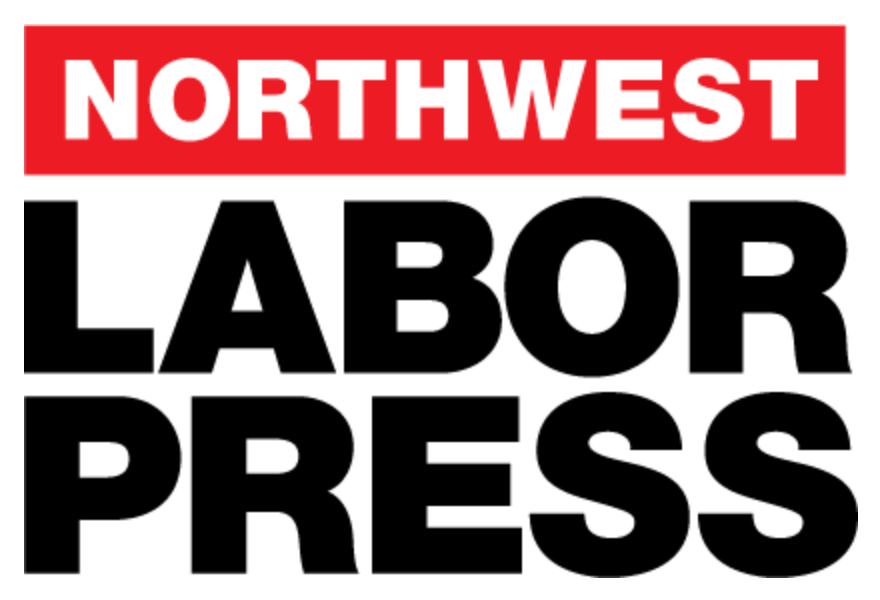The largest healthcare strike in state history is becoming one of the longest. As many as 5,000 Providence workers have been on strike since Jan. 10.
The Oregon Nurses Association (ONA) announced tentative agreement Feb. 2 on new contracts covering two of the 11 bargaining units on strike: 80 nurses, physicians, midwives, and nurse practitioners at Providence Women’s Clinic. Members were voting as this issue went to press. Over a two-year contract term, the offer would raise wages a total of 4% to 20% for nurses and 7.5% to 15% for advanced practice providers like nurse practitioners.
But when this issue went to press Feb. 4, more than 4,000 nurses and 70 physicians and nurse practitioners remained on strike at eight Providence hospitals — in Hood River, Medford, Milwaukie, Newberg, Portland, Seaside, Oregon City, and Washington County.
At the request of Oregon Governor Tina Kotek, Providence and ONA agreed to return to in-person mediation Jan. 29. Providence had refused to bargain with hospital nurses in the 10 days leading up to the strike and during the first four days of the strike, though it continued bargaining with the Women’s Clinic units.
“I didn’t think we’d be out here longer than a week. But if I’ve got to stay out here for months, I will do so,” Michelle McSherry, a lead day charge nurse on a surgical oncology unit at Providence Portland, told the Labor Press.

The loss of income is straining many striking workers. McSherry said she was using her retirement savings to get by while out on strike. The American Federation of Teachers, which ONA is part of, is offering striking workers interest-free loans. ONA also has a strike hardship fund.
Providence announced Jan. 30 that healthcare benefits for striking workers would continue into February.
In the same announcement, Providence indicated that strikers who want to cross their coworkers’ picket line and return to work could reach out to their supervisors, but might wait up to five days if their shifts are currently filled by the temporary replacement workers Providence has hired.
Providence has been spending heavily to employ 2,000 temporary nurses during the strike. ONA said some job postings are offering replacement nurses $7,000 per week, which is significantly more than what Providence pays regular nurses. The union estimates Providence is spending $25 million a week to employ scab nurses.
Patients have said the quality of care plummeted during the strike. A woman who gave birth at St. Vincent Jan. 9 said that after the strike started, it took hours to get a nurse to give her an update on her baby, who was downstairs in the neonatal intensive care unit, the Oregonian reported.
Being out on strike is hard for nurses, McSherry said.
“We feel that we can take better care of our patients than the scabs that are coming from wherever. We know our patients. We know how our hospital works. We know how to get the best for them,” McSherry said.
In McSherry’s surgical oncology unit, nurses are assigned to four patients; they’re complex cases, and nurses often aren’t able to keep up. McSherry has worked at the hospital for 31 years. She says infections and falls have increased in recent years. Patients are hitting their call lights and waiting longer to have a nurse come check on them. Instead of being able to sit with a patient who has just received devastating news about their health, nurses have to move on quickly to the next patient.
“It’s demoralizing not to be able to do the kind of care that we’ve been taught to give,” McSherry said.
The Oregon Legislature passed a new hospital staffing law in 2023, which requires minimum nurse-to-patient ratios ranging from 1:1 for emergency department trauma patients to 1:4 in postpartum, oncology, and other departments.
In reports released in January, the Oregon Health Authority found that multiple Providence hospitals violated the staffing law by not creating required nurse staffing plans. Complaints filed in June 2024 alleged that Providence Portland failed to follow nurse staffing plans in multiple units. OHA investigated and found that Providence wasn’t failing to follow staffing plans; it didn’t have the plans in the first place, in violation of the law. Providence Seaside also failed to create staffing plans, OHA found.
The violations occurred days after the June 1, 2024, deadline for hospitals to implement nurse staffing plans that met the requirements of the new staffing law. The staffing plans have to be approved by a majority of a staffing committee made up of direct-care staff like nurses, and managers. If the committee can’t reach an agreement, the plan goes to binding arbitration.
ONA said Providence told staff it wouldn’t agree to contract requirements that differ from state law, but ONA said the hospital system had shown it couldn’t be trusted to follow the staffing law.
ONA wants staffing plans to take into account the severity of a patient’s condition and the level of care they require.
Reuben Paul, a nurse in the medical surgical unit at Providence Portland, said staffing shortages extend to other roles in the hospital, like Certified Nursing Assistants (CNAs).
“I would love to be working at the top of my license, being able to manage discharges, patient education, but I can’t do all those higher-level nursing things when I’ve got to take people to the bathroom, keep them from falling, cleaning them up, those types of basic things,” Paul said. Those responsibilities are ones that would fall to CNAs, if there were enough of them.
Paul said nurses are ready to be out on the picket line for a while.
“We knew that Providence typically is pretty stubborn in the way that they negotiate,” Paul said. “So luckily, a lot of us have been saving up some money and looking up some creative ways to stay afloat financially during this time, and I think that most of us are able to outlast Providence.”
Out on the strike picket line, workers are keeping up their energy and staying warm with music, heat lamps, gas-powered fire pits, and games like cornhole. As he spoke with this reporter, Paul was bouncing on a mini trampoline that someone had picked up for free.
“A little bit of coffee goes a long way for me, and the music keeps us warm,” Paul said.



